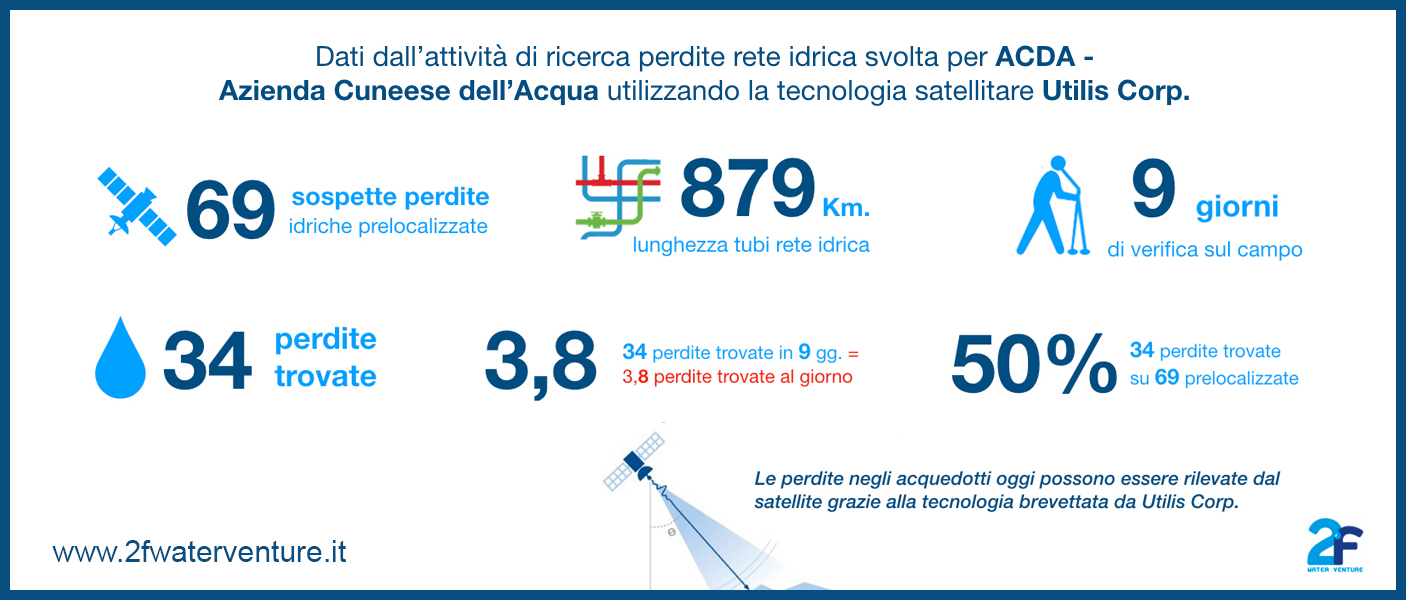
According to the latest ISTAT (Italian central statistics office) data, the state of health of the 500,000 km of network carrying drinking water in Italy is highly precarious. With reference to 2015, in fact, no less than 41.4% of the drinking water input to the pipeline never reaches the taps. This waste is estimated at 3.45 billion cubic meters of water per year, for a financial loss of € 4 billion.
The problem of water network maintenance and protection is certainly not unique to Italy but concerns the water systems of the entire world to some extent. From Israel, the startup Utilis Corp. has patented an innovative technology that is proving an extremely effective instrument for resolving this age-old situation.
The Utilis system utilizes satellite technology to acquire raw images of the area involved through a satellite orbiting at an altitude of 638 km and then analyzes them algorithmically and corrects them radiometrically to produce an image of the potential losses in user-friendly GIS ratios showing the exact position on the ground.
This technology has also come to Italy thanks to Hera Group, which, after successfully testing it on the Ferrara network, extended its use to the entire 27,000 km of network managed by the multiutility, active now in over 300 Italian municipalities.
A decisive step was taken in 2017 to disseminate Utilis technology in Italy by appointing 2f Water Venture S.r.l. as exclusive distributor for this system. In just over a year 18 projects have been launched with partners such as Acea, Acque Bresciane, ATS - Alto Trevigiano Servizi, Ingegnerie Toscane and Multiservizi , to name just a few water utilities that have trusted 2f Water Venture and Utilis.
We asked Massimo Ramazzotto, product manager at 2f Water Venture, how the 2f approach will be developed to the Italian market.
“We are seeking clients among the water utilities. We present the Utilis technology, explain how it operates, and what our objective is: finding water leaks by providing an instrument to optimize network management long term. We suggest an initial pilot project on 600 km of water network, equivalent to 70 buffers to be delivered and then a service of two or three scans per year on more than 1,000 km of network.”
What results have the latest pilot projects achieved?
“Among the pilot projects completed in the early months of 2018, one interesting case history concerns ACDA (Azienda Cuneese dell'Acqua), which manages the integrated water cycle in 100 municipalities of the Cuneo area. In the nine days devoted to the project, we obtained results in line with our expectations and those of our client," Ramazzotto explained. "Surveying 879 km of the network, 69 buffers were located in which 34 leaks were found, for an average of 3.8 leaks found per day, an enormous improvement in water leak location compared to an average of little more than one leak per day found with traditional acoustical systems.”
Utilis sources reveal that the surprising results of this technology are continuously improving due to the gradual refinement of the algorithmic analysis of the activity on the areas where Utilis technology operates continuously.
 EN
EN  it
it

